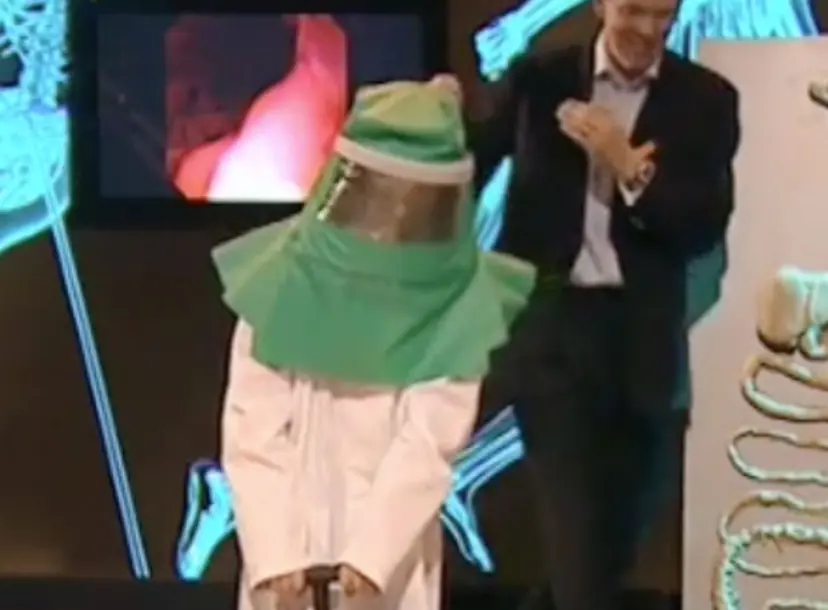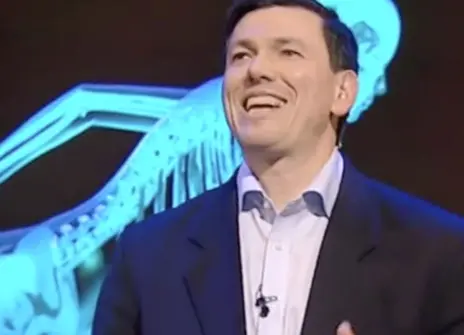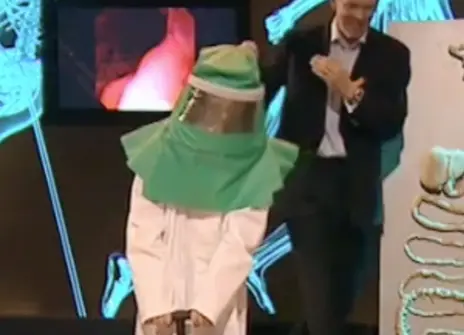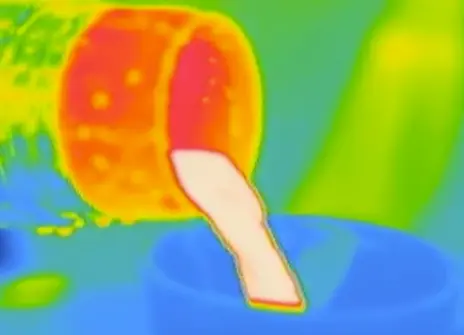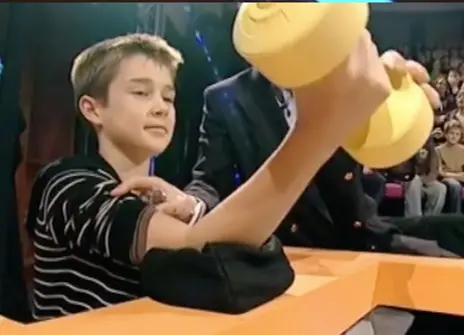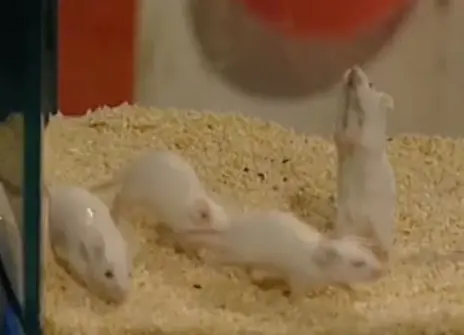Lecture 2 – Completely stuffed
The food we eat contains the fuel we need to power our bodies. But what are they? How do we get them from our dinner plates to our cells? And what other things are there in food apart from fuel?
In this lecture, Hugh Montgomery explores what happens to the fuel and oxygen in a cell and reveals how food is converted into an energy currency to be spent in different ways around the body.
He examines how our body responds to the challenges of dehydration and starvation, and what methods it has to prolong survival. Find out what happens when we eat or drink more than we need or when we’re starved of food and deprived of water.
Finally, Hugh thinks about castaways and talks to some real-life survivors, finding out how their bodies coped with the lack of food and water.
About the 2007 CHRISTMAS LECTURES
When a huge meteorite hit the Earth 65 million years ago, it wiped out the dinosaurs whilst our ancestors survived. Since then our planet has experienced several similar episodes of mass extinction and each time, our ancestors have lived on. We have evolved to withstand the most extreme environments, but what determines our survival?
The science of survival
In his series of five lectures from 2007, geneticist Hugh Montgomery leads an exploration of human endurance and the very thin line between life and death.
Hugh reveals how the body is equipped to perform exercise, adjust to high altitudes, and endure hot and cold climes. Discover how the human body responds when faced with peril, and why some people take flight, whilst others stay and fight. Plus, find out how our bodies deliver the energy we need to react, and what happens to our vital organs when the adrenaline kicks in.
A question of fate?
Along the way, Hugh speaks to real-life survivors who have fought some of the world’s most extreme conditions. From starvation to dehydration, and severe cold to blazing heat, their extraordinary tales remind us of the fragility of human life and the astonishing endurance of the human body.
Why do some people live and some people die in perilous situations? Does our fate boil down to good old-fashioned luck, or does it lie deeper in our genes? And just how much influence does our environment have over our chances for survival?
NB: We do not currently have a version of Lecture 1 available due to technical issues.
